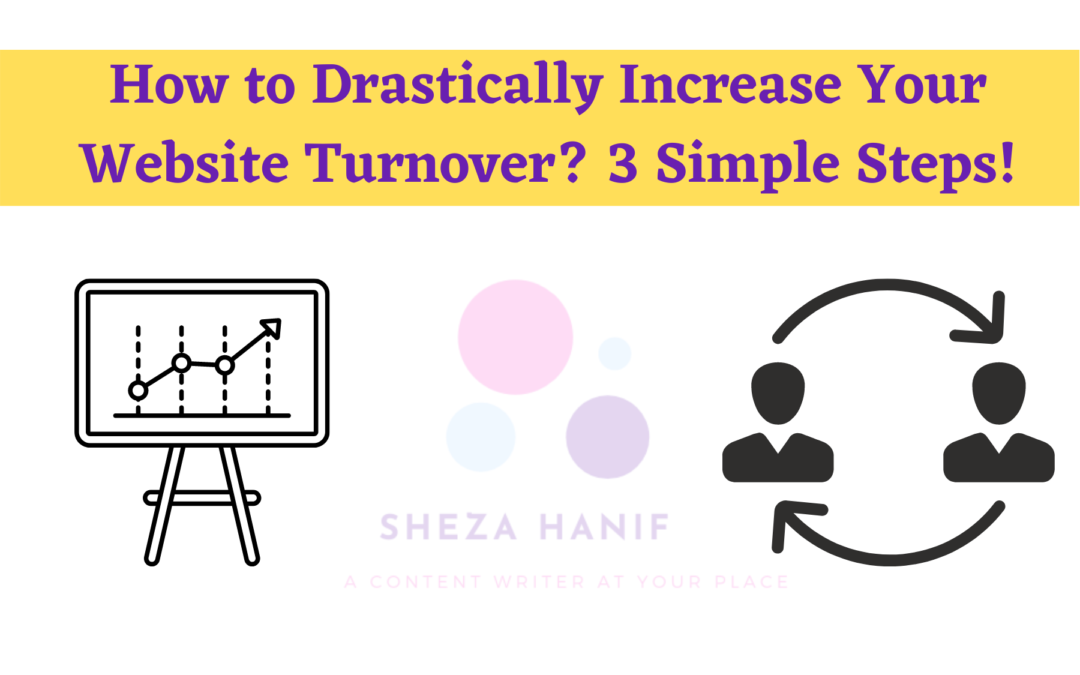How great would it be if you managed to drastically increase your website turnover within 3 weeks without incurring extra costs?
What if I explain to you how you can easily increase your website turnover with a little psychology?
Make your customers lose.
The emotion that arises with loss is many times greater than with profit. We fight harder to avoid losing than to win.
This is partly due to loss aversion and the (over)valuation of what we already have.
How do you respond to that?
In your sales texts, use the advantages of your product and the disadvantages of not buying it.
What are your customers missing out on if they don’t buy your product or service?
Or what offers are they missing out on?
Offers always work. Everyone loves bargains. It offers work even better when one can lose.
So do not use offers as profit but as a loss.
Give an offer as a loss to increase website turnover.
An offer as a loss?
Yes.
Not “This week an extra discount of 100 euros on….”
But
“Only this week, not 397 euros but only 297”
With the first option, it will feel like I get an extra discount.
With the second option, it feels like I have to act quickly. Otherwise, I lose 100 euros.
Now option two also makes more use of a smart way of framing.
You can adjust your text, use offers, but there is one more thing you can do.
Increase your sales by giving away your product or service for free
Free?
Wait a minute. I promised you extra sales, remember?
How does it work?
Give everything away for free.
Let people use your service or product without asking for loss first. This means that you do not charge any costs.
What is happening?
I can get something without risk or a sense of loss. Chances are you have my attention.
If your service or product fits well, you will only give your customers a profit. They can use something for free and reap the benefits without incurring any loss.
Now, this sounds very nice. After all, your customers will be delighted.
Anyway, you also have to pay at the supermarket, so let’s also think about your satisfaction and website turnover?
What are we doing?
Take the profit
We’re going to take the profits from your customers.
Your customers have not yet felt a sense of loss. All you’ve given them is profit. Now it comes. You no longer let your customers use your product or service for free.
All your customers have to do to avoid the loss is pay you the price.
This technique, which is really nothing more than a trial period, is even more powerful when combining it with a powerful persuasion technique.
“A one-time offer.”
If they do not take advantage of the offer, they will lose your product or service and a great offer.
Give them less
Analysis paralysis, or choice stress.
A powerful psychological process that we have all experienced.
As a little boy or girl, you stand in front of a giant candy box, and you can only choose 1 candy from mom. You suddenly get stressed. What if you don’t choose that one perfect candy?
As a solution, you decide to carefully consider all options and stare at the candy box for at least an hour, after which your mother increases the pressure a little more irritated.
After some ranting from your mother, you finally make your choice. Even now that you have already made your choice, you still doubt whether it is the right one.
You can also find this choice stress online.
The strategy most people choose is not to neatly divide their candy into categories and easy-to-pick packages. They give us that stress feeling of the gigantic candy box.
“Look, dear customer, what I have for you.”
It is actually the same as if the supermarket were to put all products on one shelf.
Trust me; you’re going to be screaming mad.
What is the solution?
chunking
What does the supermarket do with all its products?
It categorizes them and places them in small niche markets.
So you have the path for the coffee drinkers. In addition to instant coffee, Senseo (incomprehensible that people still drink that at all), coffee creamer, and sugar, there are also filled cakes and stroopwafels.
You should also have the paths of the supermarket on your website or landing page .
It makes a choice between products easier, and you entice your customers to buy additional products.
Think about which categories you can divide your products or services into and which categories fit together.
Do you only offer a few products or services?
Then create categories.
You do this for two reasons. Or actually three.
- It’s easier for your visitors.
- You have a clear structure and navigation. So if you grow in the future and start offering more products or services, you can easily add them to the website. This without losing the overview and ease of use.
- It’s good for your SEO. By working with categories, you amplify and distribute the value on your website.
Reduce the step
The fear of loss is great. You know that by now. Then you also understand that avoiding the risk of loss plays an important role in the selection process.
You can easily remove the risk of loss by adjusting your choice of words.
What name do you give a quote?
Just quote?
Beautiful!
There is a good chance that you will significantly increase your success rate with a small adjustment.
When people are orientating, they don’t want to be attached to anything.
“You know what,” thought many entrepreneurs.” I don’t just call it a quote, but a non-binding quote.”
Okay, a nice first step.
But what if we don’t use the word quote at all?
Which sounds more noncommittal – quotation or proposal?
Your choice of words is crucial for your sales. I’ll prove it to you later with a nice example from practice.
Before we do that, I would like to ask you to consider your choice of words.
When I view your sales page, the page where you sell your product or service, have you thought about your choice of words?
What do you use as call 2 action
- “Make me an offer.”
- “Contact Us”
- “Give me more information.”
What sounds more noncommittal, proposal, or more information. Book now or take an option?
By adding just the “take the option,” Djoser, a travel company, has increased the number of bookings by 33%.
Can you see what a simple word can mean for your website turnover?

